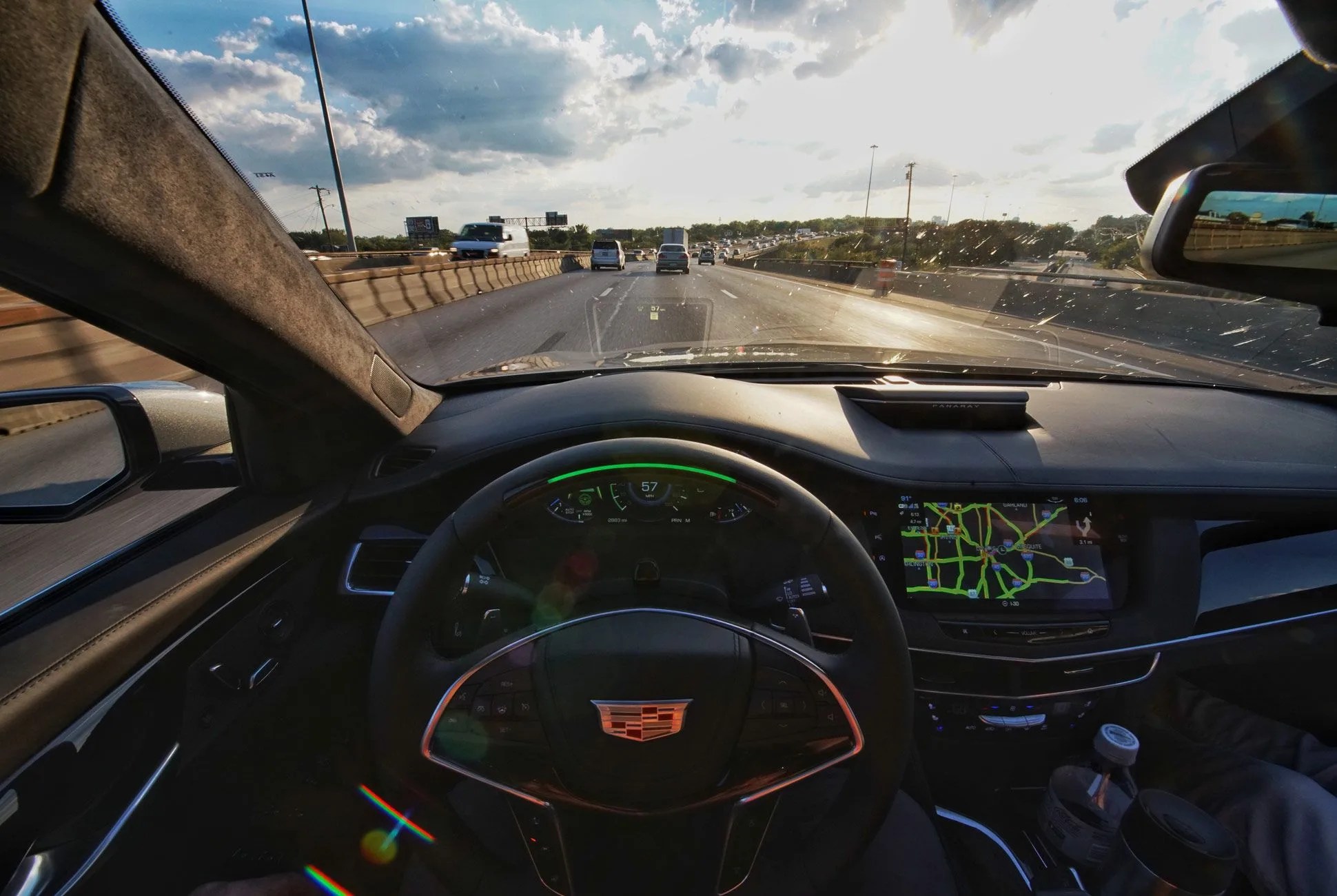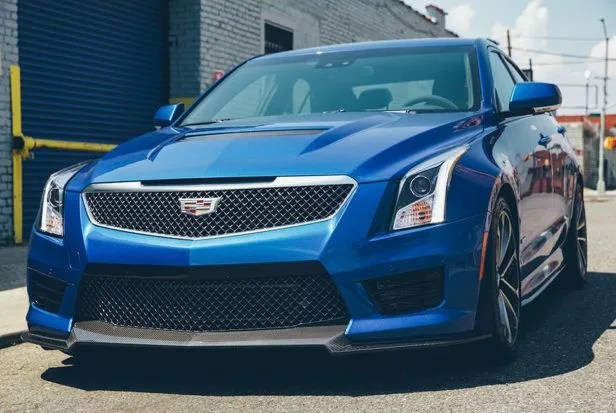Operating Cadillac’s newly semi-autonomous CT6 sedan on the freeway is a lot like flying a business jet. With the airplane, you take off, make sure everything is lined up vis-à-vis your heading and altitude, and then hit the autopilot. Once engaged, all you have to do is keep an eye on things, communicate with air traffic control every now and then and take over for the landing. There’s no persistent operation of the stick and rudder that compounds physical strain, no mandatory eyes-forward attention that ensures psychological fatigue. Training and skill aside, flying is a breeze.
It’s much the same in a car equipped with Caddy’s new Super Cruise technology, the only semi-autonomous system that permits extended hands-free driving. As I found during a two-day, 1,200-mile (ouch!) drive from Memphis to Dallas to Oklahoma City to, finally, Santa Fe, you launch yourself from an on-ramp, get the car nice and centered in a lane until a green light pops up by the speedometer and press a button, and the steering wheel shifts with spooky authority beneath your fingers as the system takes control. It immediately begins arcing gracefully through turns and modulating speed based on traffic and terrain. At that point, you can release the wheel, sit back, and… well, what? You can’t exactly check out of driving duties since you’re still on call should something go seriously sideways. (Like the car, for example.) Nor can you sit there and tap on your laptop or watch a movie. This isn’t a self-driving car in the strictest sense, and like a business jet pilot, you’re still the driver-in-command.
Rather, Super Cruise is merely an advanced driver-assist tool. It’ll track other vehicles and manage the throttle, steering and braking on approved limited-access, divided highways (i.e., not on suburban or rural two-lane roads). But it won’t change lanes for you, dodge traffic barrels in construction zones (among other things) or function reliably if the lane markings suddenly vanish. If it detects any uncertainty in its own command confidence, you’re called up. Indeed, if it further sniffs out any lack of proper vigilance on your part — and believe me, the car knows when you’re not paying attention — it’ll flash warnings, demand you take over, set off vibrators beneath your butt and, eventually, slow down to a stop and notify OnStar that you’ve checked out and clearly need medical assistance.
I assumed it would generate a relentless stream of alerts and warnings as I gazed out the window or scrolled through Twitter on the sly. But when you’re hanging out behind the wheel, acting natural, the car won’t get its hackles up.
But here’s something you can do once you hit that little button on the steering wheel, however unsanctioned the act might officially be — and this is important since it’s the Holy Grail of driving goals among basically everyone on Earth: goof off on your phone. A little bit. No, you’re not supposed to. No, Cadillac does not encourage this. [Editor’s note: Nor does Gear Patrol. Safety first.] But the truth is, the system allows for a modest degree of divided attention. When the engineers first describe the car’s attention-monitoring capabilities — a combination of an infrared camera aimed straight at your face from behind the steering wheel to monitor where your eyes and face are aimed and sensors to determine when your hands grab the wheel — I assumed it would generate a relentless stream of alerts and warnings as I gazed out the window or scrolled through Twitter on the sly. But when you’re hanging out behind the wheel, acting natural, the car won’t get its hackles up. This includes glances to your smartphone, as long as it’s casual — not persistent — and you remain vigilant, available and ready to take over.
The system, which uses a combination of cameras, precision GPS and LIDAR-based map data, has other performance limits, including a maximum speed of 85 mph and an often mystifying set of constraints about when and where it can be deployed. These include driver-behavior assessment as well as gaps in mapping data, though no explanations are offered when the system refuses to engage.
Ultimately, though, the system works very much as advertised, and you quickly fall into a rhythm with it as you learn its various limits and demands. Eventually, thanks to what it can do, driving becomes virtually stress- and fatigue-free. Over two days of driving major distances across Texas, Oklahoma, etc., I remained fresh and alert the entire time, and I have no doubt at all that we used the system for at least 95 percent of the drive. I still have complaints about the system’s relative ease of use and lack of completely intuitive interfaces; I can’t toss the keys to a friend or family member and tell them to try it out without giving them 15 minutes of instruction first, but we’re at the dawn of this new age. That stuff will be smoothed out in due time.

